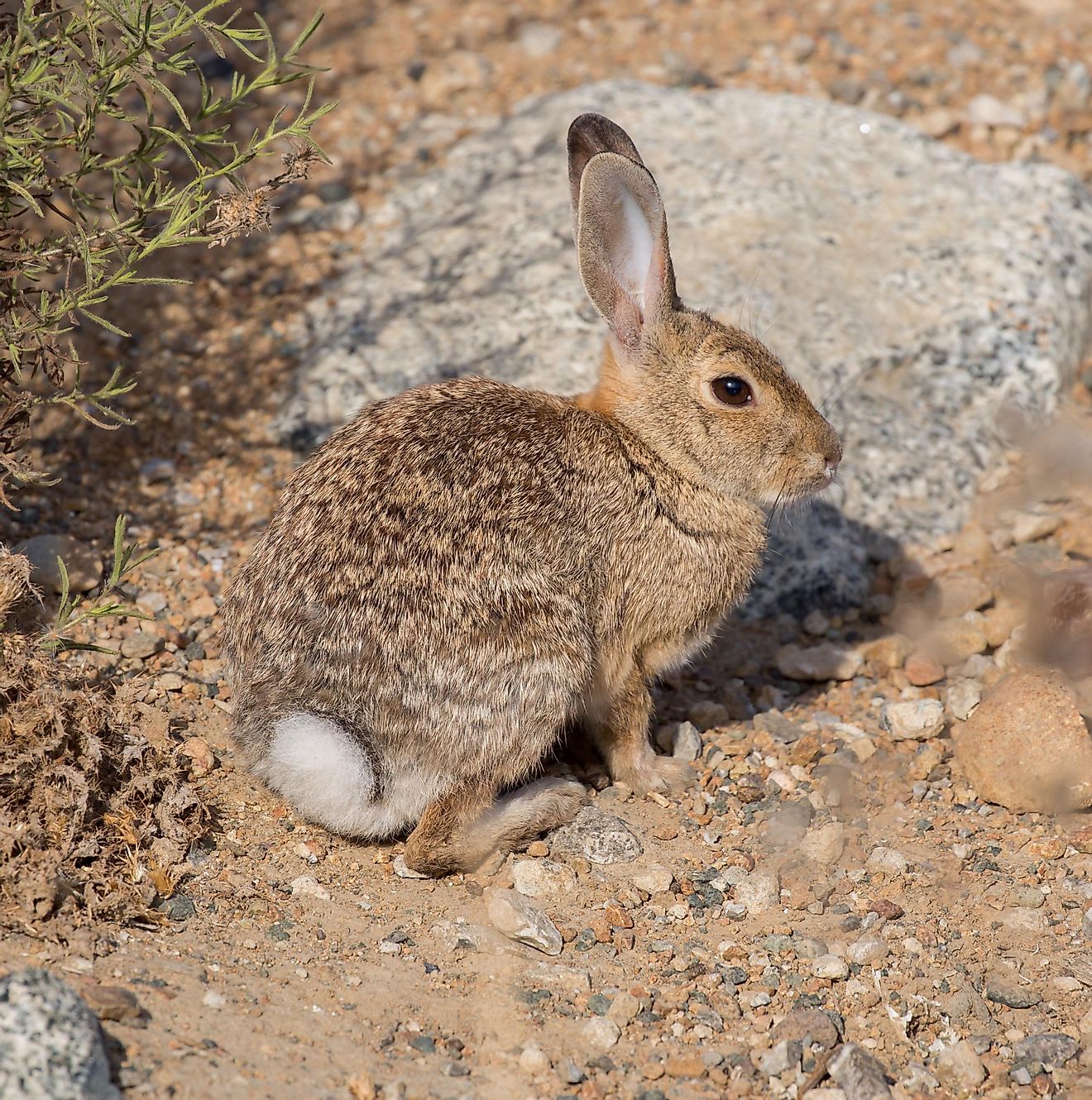Desert Cottontail Facts: Animals of North America

5. Physical Description
The Dessert Cottontail (scientific name Sylvilagus audubonii), which is also frequently known as Audobon’s Cottontail, is found throughout much of North America, being specifically common in Baja California (Mexico, Central Nevada, and Western Texas. Cottontails are small game mammals called such because of the cotton ball-like characteristic of its dark and white furred tail. They have large eyes and hind feet, brown to light colored fur with a patch of orange along its throat and whitish underside of the body. They usually grow up to 17 inches in length, weighing no more than three pounds. Unlike most animals, the female individuals are typically heavier than are their male counterparts.
4. Diet
Cottontails are predominantly herbivores, that is to say they feed solely on plants. They are unique from many other rodents in that they eat while sitting upon all fours. Grasses make up roughly 90 percent of their diets, although they have been known to feast on the stems, leaves, and buds from a wide variety of shrubs and rushes. Buttercup, goldenrod, chickweed, cinquefoil, and plantain are among their most loved food sources during the summers, along with violets, sheep sorrel, and smartweed. Cottontails prefer to forage for food at dusk and during the early morning, as this is when most of the bigger animals and predators in their habitats are either resting or have contentedly finished with their meals. They are often seen quickly hopping from one place to another, feeding on the seedlings of woody vegetation like silky dogwood, fox grape vines, cherry trees, apple trees, and birch.
3. Habitat and Range
Cottontails prefer the arid vast lands and woodlands of Nevada, Texas, and Mexico hence the addition of the word "desert" to their common name to differentiate them from other cottontails. During the daytime, they prefer to stay inside of holes and under heavy brush in order to hide from their many predators, which include dogs, badgers, foxes, and feral cats. These animals are prey to a host of larger animals and, if not for their remarkable ability to reproduce often, would have gone extinct long ago. At the present time, these animals are not facing the threat of extinction, although their numbers have been greatly affected by the destruction of their natural habitats, especially due to conversion of land for cattle grazing, and are also killed by small game hunters for meat, fur, and sport trophies.
2. Behavior
Cottontails are seldom solitary, although animal experts would hardly go so far as to call them sociable. They are quick-footed animals, and they prefer to stay "indoors" when not feeding on lush vegetation or looking for a mate. Their sense of hearing is uncanny. In fact, it’s one of their primary defense mechanisms against larger predators like hawks, owls, coyotes, and bobcats. Once they realize they’re being hunted, they will typically dart quickly for cover or freeze right where they are. They have also been known to escape from predators sprinting with a zigzag pattern that’s often difficult to follow, facilitated by their desert camouflage coloration and excellent vision.
1. Reproduction
Cottontails start to breed at 3 months old, with females producing between 3 and 5 litters per year, and each litter typically having 3 young ones. Nests are usually dug into the ground to protect their babies from would-be predators. These animals rarely stray too far from their birthplaces, preferring instead to build their nests in surroundings that they’re more familiar with. Gestation is only about 30 days. After birth, the young ones are fed once daily within their nests by their mothers. The young ones then leave the nests after three weeks in order to look for their own food, find their own respective mates, and reproduce themselves after around 7 more weeks.











